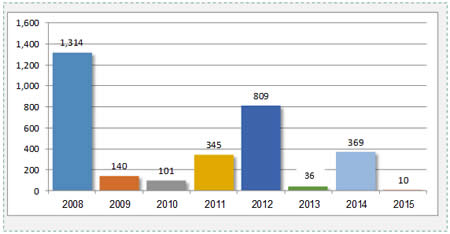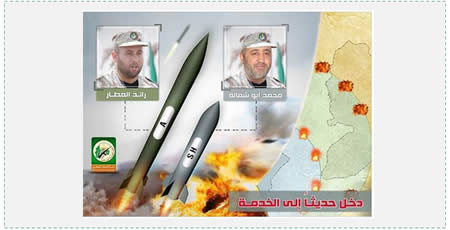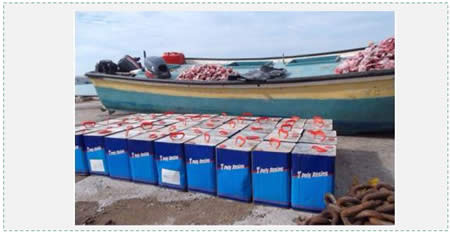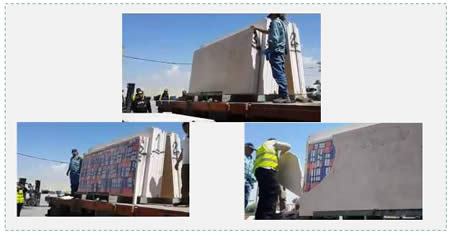Main Conclusions
1. This study examines the activities of the terrorist organizations in the Gaza Strip during the year since Operation Protective Edge, especially Hamas. Most notable have been the small number of rockets fired into Israeli territory from the Gaza Strip, and the relative quiet along the Israeli-Gazan border.
2. The number of rocket attacks (12 identified rocket hits, three of them from the Sinai Peninsula) was the lowest since Hamas took control of the Gaza Strip in 2007. It was the lowest number both in absolute terms and in comparison with rocket hits identified during the first year after Operation Cast Lead and Operation Pillar of Defense. There were also fewer clashes along the Gaza Strip border compared with the first year after previous major IDF operations.
Rocket Hits Identified in Israeli Territory, 2008 – 2015[1]

3. The drastic decrease in rocket fire from the Gaza Strip has been caused by Hamas' policy of restraint, enforced more strictly and rigidly than in the past. It is primarily a result of the deterrence Israel gained in Operation Protective Edge. That deterrence is an asset but it is expected to erode as time passes. The ongoing sporadic rocket attacks of the past year have been carried out by rogue organizations and networks as a way of challenging Hamas or to resolve internal struggles. During the past month ISIS-affiliated Salafist-jihadi networks in the Gaza Strip and rogue elements of the Palestinian Islamic Jihad (PIJ) have used the rocket fire to send messages of violence by firing rockets into Israel. The sporadic rocket fire continues.
4. Hamas' policy of restraint is the result of its desire to gain time to restore its military-terrorist capabilities, which were severely damaged in Operation Protective Edge. It also wants to rebuild the civilian infrastructure and increase external support for the Gaza Strip (with donations of funds and the lifting of the so-called siege). However, during the past year the time gained was not exploited for significant civilian reconstruction, but instead invested in restoring Hamas' military capabilities (and those of the other terrorist organizations).
5. Restoring military capabilities included replenishing, enlarging and improving its rocket arsenal (mainly by manufacturing its own weapons); constructing defensive and offensive tunnels (i.e., tunnels that enter Israeli territory); renewing military-terrorist units decimated during the fighting and establishing new military frameworks; enlisting operatives, including youths and semi-military militiamen ("the popular army"); intensive training (emphasizing infiltrating Israeli territory and abducting Israelis); improving the capabilities of the security forces, which are important in preserving Hamas' control of the Gaza Strip; finding alternative smuggling routes to replace those severely damaged by the measures taken by Egypt; and increasing its presence along its border with Israel to improve its ability to control the Gaza Strip and carry out routine security activities.

Two new kinds of rockets were exhibited in a military display held by Hamas in Gaza City to mark the first anniversary of Operation Protective Edge. According to Hamas claims, they have already been added to its arsenal. The rockets are named for Hamas terrorist operatives killed during Operation Protective Edge, Ra'ed Atar and Muhammad Abu Shamala. Izz al-Din al-Qassam Brigades spokesman Abu Obeida claimed that in due time the rockets' capabilities would be made apparent (Al-Aqsa TV, July 8, 2015).
6. In ITIC assessment, Hamas and the other terrorist organizations are still in the process of intensively rebuilding their military capabilities. Therefore they are strongly motivated to preserve the security lull, which enables them to continue the buildup without interruption from Israel. While the process has not yet been completed, Hamas tries to glorify its military capabilities and magnify its achievements in Operation Protective Edge (strengthening "the myth of victory"). To that end Hamas publicly sends deterrent messages to Israel, claiming its military capabilities have returned to their previous competence and even surpassed it.
|
7. The year since Operation Protective Edge has been notable for the establishment of the Supporters of Jerusalem (Ansar Bayt al-Maqdis), ISIS's branch in the Sinai Peninsula. The military capabilities demonstrated by the Supporters of Jerusalem against the Egyptian security forces motivated Hamas' military wing in the Gaza Strip to cooperate with the organization in smuggling, training and providing medical aid (even at the expense of worsening relations with Egypt). So far the activities of the Supporters of Jerusalem have been directed against the Egyptian security forces, but their cooperation with Hamas' military wing increases the terrorist threat to Israel along the Egyptian border (both routinely and in a crisis). On the other hand, inside the Gaza Strip Hamas' security forces have been suppressing the ISIS-affiliated Salafist-jihadi networks trying to challenge its control. So far, however, suppressing the networks in the Gaza Strip has not prevented Hamas from cooperating with the Supporters of Jerusalem outside the Gaza Strip. |
8. Politically and internally, Hamas is forced to deal with a series of problems and constraints that make it difficult to operate as movement and challenge its governance of the Gaza Strip.
1) Delays in reconstructing the civilian infrastructure in the Gaza Strip:
A. Hamas has strong interests in rehabilitating the extensive destruction caused by Operation Protective Edge, mainly because it is the de facto sovereign of the Gaza Strip. In addition, Hamas wants both to prevent internal civilian dissatisfaction and keep its opponents from becoming bold enough to erode its power of governance.
B. On October 12, 2014, an international conference was held in Cairo under Egyptian and Norwegian aegis to promote the reconstruction of the Gaza Strip. It was attended by representatives of fifty countries and dozens of international institutions. The Palestinians received pledges of $4.9 billion for reconstruction. Qatar pledged $1 billion, the EU $570 million, Saudi Arabia $500 million and the United States $400 million. All the donors promised to transfer the funds as soon as possible.
C. One year after Operation Protective Edge it can be said that the promises have not been kept and that there is a substantial gap between the pledges and the funds received. Houses in battle zones that were destroyed have not yet been rebuilt and many families are still homeless. According to reports from the Global Humanitarian Assistance Initiative, which follows the transfer of funds for humanitarian purposes, and from UNRWA, only a small portion of the promised funds were actually transferred to the Gaza Strip. According to Rami Hamdallah, prime minister of the Palestinian national consensus government, only 27% of the promised $4.9 has actually reached the Gaza Strip (Al-Sharq Al-Awsat, July 14, 2015). As a result the Gazan public has become increasingly frustrated and sometimes holds protests and demonstrations, most of them organized or permitted by Hamas. So far Hamas does not face a meaningful governance problem.
D. What causes the continuous delays? The Arab and Western donor states are generally accused of causing the delays because they (customarily) do not rush to send the funds they have pledged. The Palestinian Authority (PA), Israel and Egypt are also accused of responsibility for the delays. However, Hamas itself bears much of the responsibility because is gives clear-cut priority to restoring its military capabilities, often at the expense of civilian reconstruction (for example by allotting funds and cement for its military buildup).
2) Internal dissention within Hamas: During the past year severe and perhaps unprecedented internal dissentions surfaced within the ranks of Hamas. Most were between Hamas' military-terrorist wing and the external leadership (headed by Khaled Mashaal), which has considerations (and constraints) of its own. Events of the past year have revealed that the military wing follows independent policies in a number of important issues, challenging the external leadership. For example, the military wing collaborates with the Supporters of Jerusalem, ISIS's branch in the Sinai Peninsula, and encourages closer relations with Iran, viewing it as a source of funds and weapons (at the expense of improving relations with Saudi Arabia and Egypt).
3) The worsening rift between Hamas and the PA: Operation Protective Edge deepened the basic disputes between Hamas and Mahmoud Abbas' PA. The Palestinian national consensus government does not function as a unified Palestinian government and Hamas continues its de facto control of the Gaza Strip, making the important decisions regarding the Strip. On the other hand, the security forces in Judea and Samaria make certain that Hamas does not increase in strength in PA territory, continuing their security coordination with Israel. The difficult relations between Hamas and the PA are manifested by mutual accusations and disputes that paralyze its ability to deal with a variety of common issues (accelerating the reconstruction of the Gaza Strip, regularizing the salaries of employees, control of the crossings, etc.).
4) Deterioration of relations with Egypt
A. This past year ISIS's branch in the Sinai Peninsula has intensified its campaign against the Egyptian security forces, with considerable success. The campaign has been accompanied by a deterioration of relations between Hamas and the Egyptian regime. The regime regards Hamas as a branch of the Muslim Brotherhood and is aware that ISIS's branch in the Sinai Peninsula receives support from Hamas in the Gaza Strip against Egypt.
B. For that reason Egypt initiated a series of unprecedented measures against Hamas, including the almost total closing of the Rafah crossing to the passage of civilians and merchandise (increasing the Gazans' sense of being under siege). That was accompanied by intensive, effective, unprecedented measures to destroy the tunnels between the Gaza Strip and the Sinai Peninsula, and the establishment of a buffer zone near the Egyptian-Gazan border (damaging Hamas' ability to smuggle weapons into the Gaza Strip and profit from the taxes it imposes on the illegal civilian smuggling traffic).
C. Egypt also conducts a propaganda campaign against Hamas, accompanied by continual anti-Hamas mud-slinging in the Egyptian media. Notably, the Egyptian Court of Urgent Matters designated Hamas as a terrorist organization. At the beginning of June 2015 an appeal was accepted, cancelling the Court's ruling. However, the appeal referred only to Hamas' political wing, thus its military wing is still designated by Egypt as a terrorist organization.
D. Because of the obstacles raised by Egypt to Hamas' smuggling through the tunnels, during the past year Hamas has looked for alternative routes to infiltrate operatives and smuggle weapons and equipment into the Gaza Strip. Attempts were made to smuggle raw materials and equipment through the Israeli Kerem Shalom crossing, occasionally with the involvement of Israeli citizens. Other attempts included smuggling by sea from the Sinai Peninsula coast to the Gaza Strip, aided by fishermen and smugglers. Such alternative routes ease pressures to a certain extent, but in ITIC assessment do not replace the tunnel system severely damaged by the Egyptian forces.

Creating alternative smuggling routes: raw materials for the Izz al-Din al-Qassam Brigades' manufacture of weapons, seized by the Israeli navy at the end of January 2015 (IDF Spokesman, February 11, 2015).

Creating alternative smuggling routes: thousands of electrodes found hidden between slabs of marble and sent to the Gaza Strip from Judea and Samaria (Crossings authority, Israeli ministry of defense, April 13, 2015).
|
9. The situation described above, of a relatively unprecedented lull in terrorism from the Gaza Strip, is primarily the result of Hamas' security and civilian interests. However the lull in the Gaza Strip is not relevant to Judea and Samaria, where Hamas encourages the establishment of military-terrorist networks for terrorist attacks against Israel, challenging the PA. 10. In the future, the main factors that can influence the situation in the Gaza Strip and rocket fire into Israel are the following: the rate of civilian reconstruction in the Gaza Strip (an acceleration in construction may curb terrorism, while a sense of strangulation and stagnation may encourage its renewal); the rate of the reconstruction of the military-terrorist infrastructures of Hamas and the other terrorist organizations (increasing their military capabilities may create a sense of self-confidence that can erode the deterrence Israel gained with Operation Protective Edge); internal Palestinian disputes and confrontations (possible catalyzing anti-Israeli terrorist attacks as defiance of Hamas); and the growing power of ISIS's branch in the Sinai Peninsula in cooperation with Hamas' military wing (increasing terrorist threats for Israel on the Egyptian border that may radiate to the Gaza Strip). |
[1]The graph does not include rocket hits during major IDF operations in the Gaza Strip, or rockets which fell inside the Gaza Strip.














